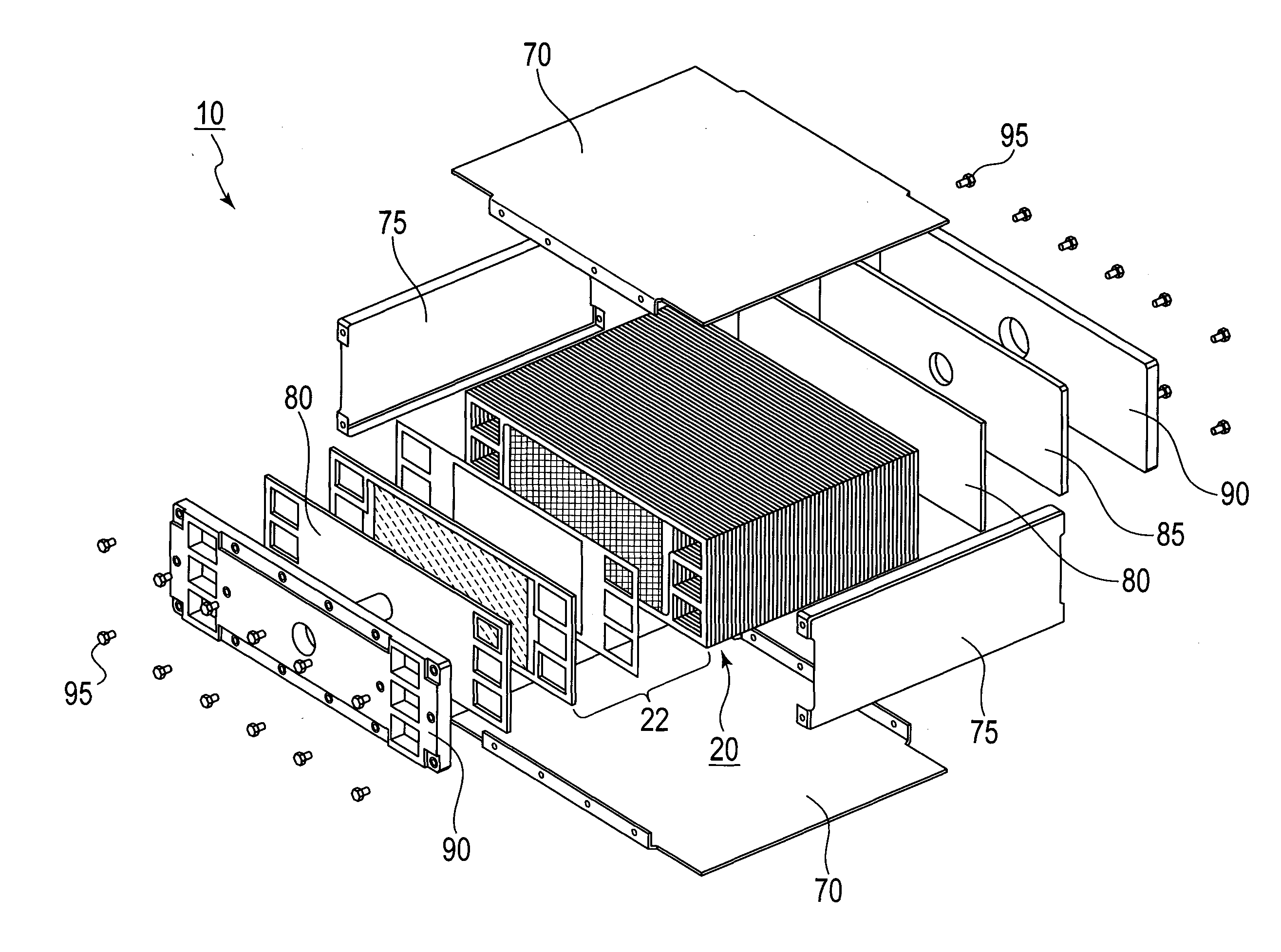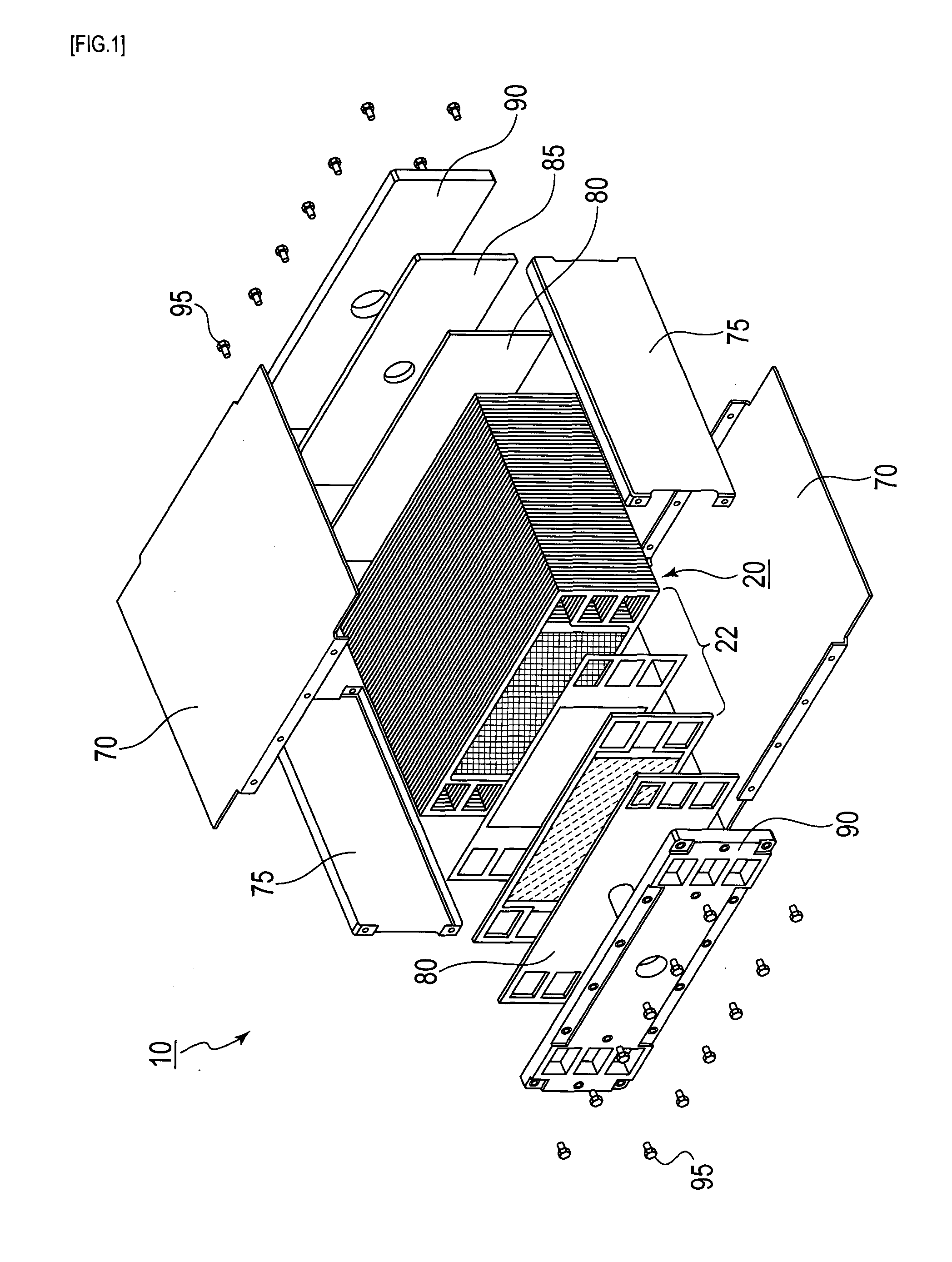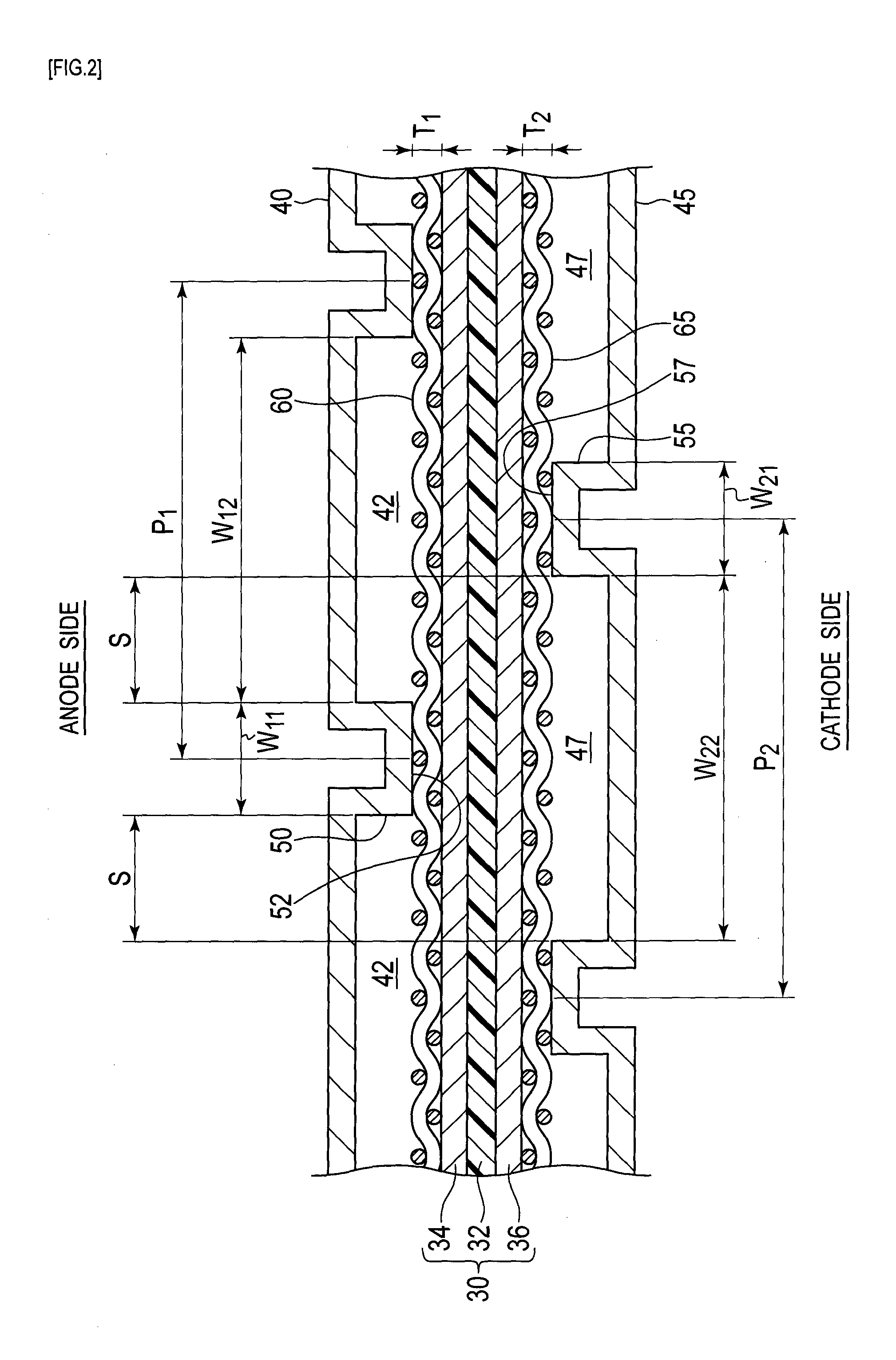Fuel cell
- Summary
- Abstract
- Description
- Claims
- Application Information
AI Technical Summary
Benefits of technology
Problems solved by technology
Method used
Image
Examples
first embodiment
[0031]FIG. 1 is an exploded perspective view for describing a fuel cell according to a first embodiment.
[0032]A fuel cell 10 according to the first embodiment is easily downsized and has good gas diffusion properties, and enables its surface pressure to be evenly distributed. For example, it is formed from a polymer electrolyte fuel cell using hydrogen as fuel, and is utilized as a power supply. For the polymer electrolyte fuel cell (PEFC), downsizing, densification, and an increased power are possible. It is preferably applied as a power supply for driving mobile objects such as a vehicle having a limited mount space, particularly preferably applied to automobiles in which the system frequently starts and stops, or the output frequently changes. In this case, the PEFC can be mounted under the seats at the center of the car body, in the lower part of the rear trunk room, and in the engine room in the vehicle front portion in automobiles (fuel-cell vehicles), for example. It is prefe...
second embodiment
[0082]FIG. 4 is a cross-sectional view for describing a fuel cell according to a second embodiment, and FIG. 5 is a plan view for describing the rib shown in FIG. 4.
[0083]The fuel cell according to the second embodiment generally differs from the fuel cell according to the first embodiment in that the fuel cell according to the second embodiment has ribs 50A and 55A which are separate bodies which are not integrally formed with separators 40 and 45. Hereinafter, the members having the same function as those in the first embodiment are denoted by the same reference signs, and descriptions for such members are omitted to avoid overlapping.
[0084]The ribs 50A and 55A are made from a wire rod having a circular cross-section and fixed to the support 60 and 65. Accordingly, even if the ribs 50A and 55A are not straight in shape, the bending rigidity of the supports 60 and 65 in both in-plane length and width directions can be improved because the contact points between the ribs 50A and 55A...
third embodiment
[0092]FIG. 6 is a cross-sectional view for describing a fuel cell according to a third embodiment.
[0093]The fuel cell according to the third embodiment generally differs from the fuel cell according to the first embodiment in that the fuel cell according to the third embodiment has a single support 65A.
[0094]The support 65A has bending rigidity smaller than that of a membrane electrode assembly 30, and is disposed on the cathode side of the membrane electrode assembly 30, and located between a catalyst layer 36 and a separator 45.
[0095]The reason why the bending rigidity of the support 65A is made smaller than that of the membrane electrode assembly 30 is that the support 65A is not present on the anode side of the membrane electrode assembly 30, the smaller bending rigidity results in even surface pressure. The reason why the support 65A is disposed on the cathode side is that the influence of gas diffusion properties is greater on the cathode side. The membrane electrode assembly ...
PUM
 Login to View More
Login to View More Abstract
Description
Claims
Application Information
 Login to View More
Login to View More - R&D
- Intellectual Property
- Life Sciences
- Materials
- Tech Scout
- Unparalleled Data Quality
- Higher Quality Content
- 60% Fewer Hallucinations
Browse by: Latest US Patents, China's latest patents, Technical Efficacy Thesaurus, Application Domain, Technology Topic, Popular Technical Reports.
© 2025 PatSnap. All rights reserved.Legal|Privacy policy|Modern Slavery Act Transparency Statement|Sitemap|About US| Contact US: help@patsnap.com



